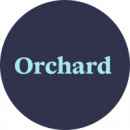Moving from interacting with users on a quarterly basis to weekly is a big ask for teams that have been operating in the same way for years. This challenge, and others like it, are ones product teams face when shifting to a continuous discovery model. It’s vital that teams implementing this method put processes in place that not only facilitate that shift, but also help maintain it over time.
New York professionals experienced in practicing continuous discovery told us that adoption involves ensuring the entire company is bought in. Since a single product or feature can require work from — and impact — teams across the business, product leaders should make efforts to keep the company informed and involved in the process. This kind of product development relies heavily on customer feedback throughout the product and user journey, so to teammates should keep clients engaged and communication channels open.
But sharing customer feedback by replaying full-length customer interviews after an A/B test or reading pages of survey comments is highly inefficient, so it’s essential to organize and distill feedback to determine patterns, themes and what to prioritize. Learn what techniques and tech tools New York product pros use to collect, organize and share customer feedback in their continuous discovery strategies.

What continuous discovery looks like at Collibra: We think of discovery as a two-dimensional process: what to build and how to build. Our product managers look at the latest trends and practices, collect direct input from the customers and analyze various insights into how our software is used to determine what to build. Then software architects and engineers make this information whole by providing the answers on how to build.
We think of discovery as a two-dimensional process: what to build and how to build.”
Tools and techniques behind effective communication: A common challenge when undergoing multidimensional growth is maintaining transparency on the product vision, strategy and roadmap. We use Aha! as our ideation platform, and we strive to keep that process transparent to everyone involved. Through open collaboration on problem statements, our ideation process is centered on getting a well-rounded understanding of the needs for specific requirements.
We couple our ideation platform with a system of voting and use demand economy principles to decide which ideas to implement. We plan to take this to the next level by assigning each customer a fixed amount of virtual currency they can use to assign their own value to a proposed feature or enhancement.
Best practices for every product org: Building a unique product is a complex balancing act of staying true to the vision and listening to customers. Being intentional about maintaining this balance is critically important.
In our earlier implementations, that balance was achieved through a configurable solution that aimed to meet the various needs of our customers, then delivering that solution based on how they were most comfortable. As we mature and we learn more about how our customers use those configurations, we’re becoming more confident and opinionated on the optimal way to address a specific need. Many of our current discovery efforts are focused on finding an optimal approach. This works best when the discovery is coupled with continuous delivery and A/B testing and when these are done in an Agile fashion.

What continuous discovery looks like at Clyde: We invest in discovery on both our customer-facing digital product and the customer service enabled by our behind-the-scenes products. Our product team has the challenge of balancing the sometimes competing needs of three primary users: consumers, retailers and claims administration managers. This platform complexity requires us to organize feedback from all three types of users. But, more importantly, we have to find the frustrations and subsequent opportunities that our clients, customers and users aren’t telling us about.
Interviews, surveys and usability tests help us unravel user recommendations to get to the root of the problem. Then it’s much easier to draw patterns and build a no-code prototype to solicit feedback from prospects, clients and subject matter experts to validate our findings. This process is continual whether we’re building a new product or iterating on a platform feature.
We work to continually communicate our learnings across all departments.”
Tools and techniques behind effective communication: For an organization of our size, we found Airtable to be effective at organizing pushed and pulled feedback. Clyde’s sales and customer success teams use Airtable templates to easily submit feedback from customers. From there, the product team labels commonalities across that feedback as well as the information collected from user interviews, reviews, surveys and win/loss analysis.
We work to continually communicate our learnings across all departments. A weekly customer insights email and a dedicated Slack channel are both effective means of sharing this information. Our communication commitment guarantees all functions across the company are aligned on the problems they are working to solve.
Best practices for every product org: Continuous discovery should never start with customer feedback on a product. This information often comes too late and can result in lost or wasted development time.
And not enough organizations and product owners prioritize user interviews. Talk to customers to understand their motivations and pain points, beyond those that they experience in your product. This communication will help product teams draw patterns and understand whether the problems they’re working on are valuable enough for the customer to pay for.
Another tactic I like to use is a daily “voice of the customer” snippet shared across the organization. This can be a profile of a customer, a quote from a recent sales meeting, feedback posted on a review or a recent “aha!” moment about a problem customers are facing. Making the commitment to share this information on a specific cadence keeps product teams accountable in continually collecting it.

What continuous discovery looks like at Orchard: Given the complexity of managing multiple real estate transactions and various related processes at once, we rarely solve a problem with a single solution. Rather, our goal is to understand specific customer pain points at each step throughout the journey and map out a path to address them.
We achieve this through a cycle of customer feedback. We talk to customers regularly to ensure our product and design teams understand what their pain points are. Informed by direct feedback, we iterate on designs until our solution aligns with the problem and is technically feasible. The engineering team then executes on the design vision to deliver the solution to our customers. And we identify the next most pressing pain points to address by repeating this process.
Important goals of continuous discovery should be explicitly called out.”
Tools and techniques behind effective communication: Twice a week, we speak with existing and potential customers to learn more about their experiences buying homes. We use a 3P research firm to directly reach out to them and conduct generative research in-market through focus groups and interviews at least once a quarter. And we use Olark on our website for live feedback from potential or existing clients.
Each customer is asked to complete a Net Promoter Score and customer satisfaction survey after working with us. We review each of these monthly on a company-wide basis, sharing the good, the bad and the ugly. We use SurveyMonkey for the surveys and Iterable to automatically send them out.
Best practices for every product org: Continuous discovery should be democratized. While product, design and research generally initiate continuous discovery, the only way to embed it into a company’s DNA is to enable and encourage everyone in the company to do it. Often, the best feedback doesn’t come from contrived interviews or surveys, but throughout the course of the customer journey, which doesn’t require heavy process implementation. The most important piece is establishing a continuous discovery mindset across the company.
Important goals of continuous discovery should be explicitly called out. Besides uncovering “unknown unknowns,” continuous discovery can also help validate or invalidate important hypotheses about products. For example, if we want to learn more about customers’ perception of value for a new service we’re contemplating and make a go or no-go decision based on that, we’ll call it out on our roadmap.

What continuous discovery looks like at Riskified: To succeed in an ever-evolving environment where we help e-commerce merchants maximize revenue and avoid fraud, we continuously gather qualitative feedback through interviews and surveys, and quantitative input via A/B testing and beta releases. These practices ensure that our merchants’ priorities are top of mind at all times.
Maintain objectiveness and neutrality.”
Tools and techniques behind effective communication: Our account management team builds and maintains relationships with our clients, and those relationships allow for a product team member to speak with a merchant at any time. That open dialogue provides meaningful insights from almost every discussion.
We aim to accomplish first-hand feedback with periodic account reviews, merchant community calls, on-site visits and, most significantly, our yearly “Merchant Summit” where our clients gather for three days of networking and learning.
We can’t be involved in every interaction, so we use Gong.io to receive automated notifications of product keywords mentioned on merchant calls. We hear the exact context in which product-related issues are discussed and know how often specific feature requests come up. That feedback gives product managers the information they need to enable continuous discovery.
Best practices for every product org: Maintain objectivity and neutrality. As product people, we tend to fall in love with our ideas, and we’re sure we know all the answers. When practicing continuous discovery and speaking with merchants on a near-weekly basis, this mousetrap of bias becomes a bear trap, so it’s vital to remember to come to every call fresh.
We design products in partnership with our clients to make sure that we’re meeting a real-world need. It’s like setting continuous discovery processes to “push” instead of “pull,” and it makes a significant difference in the quality of the products we develop.












